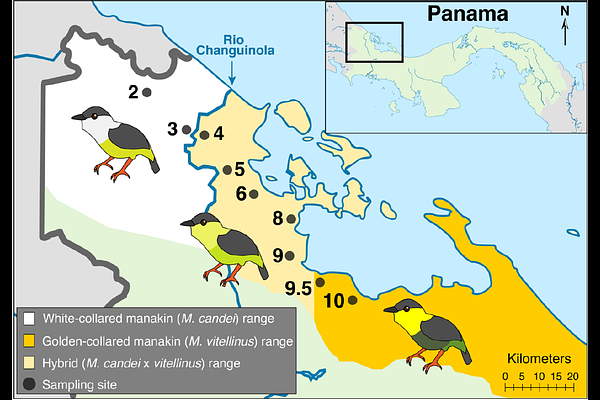Reduced offspring viability is associated with long-term stability of a narrow avian hybrid zone

Reduced offspring viability is associated with long-term stability of a narrow avian hybrid zone
Long, K. M.; Braun, M. J.; Abrego, A. M.; Jaramillo, O.; Brawn, J. D.
AbstractFitness of hybrid individuals can shape the dynamics of hybrid zones and offer insight into speciation processes. Yet, accounts of hybrid fitness in natural hybrid zones are few, especially from tropical regions where species diversity is high, and speciation processes could contrast with those at higher latitudes. We investigated a hybrid zone between the white-collared manakin (Manacus candei) and the golden-collared manakin (M. vitellinus), two lek-breeding species characteristic of lowland forest habitat in Central America. Despite evidence of asymmetrical introgression and selection on male secondary sexual traits, ongoing sampling indicates that this hybrid zone is spatially stable with narrow clines, thus implying selection against hybrids. To evaluate hybrid viability, we estimated two components of hybrid fitness: survival of adults and egg hatching rates, and a possible selective pressure: prevalence of parasitism by vector-borne haemosporidian parasites. Estimated survival was similar between parental and hybrid populations and the prevalence of infections by Plasmodium spp. or Haemoproteus spp. parasites was uniformly low. Estimated rates of hatching success, however, were lower in nests from our hybrid population (one or two eggs failed to hatch in 70% of nests) compared to nests at the parental species (M. candei 28.6% and M. vitellinus 19.0%). Thus, despite extensive admixture and clear evidence of introgression of male plumage traits under sexual selection, partial infertility or elevated rates of developmental mortality in hybrid offspring may underlie long-term stability in this hybrid zone.